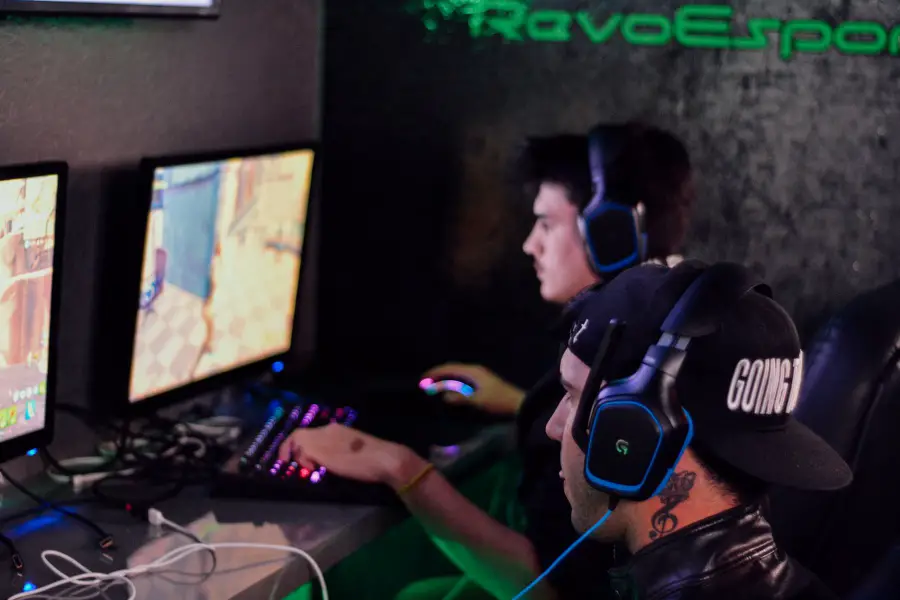What Parents Need to Know about Fortnite

If you’ve been around kids in the past year you’ve probably heard rumblings about Fortnite. It’s a wildly popular game available on almost all the consoles and also has a mobile gaming option. While you may be aware that it’s a game, it’s popular, and your kid’s friends are playing it, there are a few more things parents need to know before letting their kid loose on the game stage. Fortnite isn’t just a game, it’s almost a cultural touchpoint, having its own slang, dances, and in-jokes.
The basics
Fortnite is a video game that is a mix of sandbox type games (games where you can go anywhere you want, unlike the games with set paths and levels like we had growing up) and third-person shooter games (games where you can see your character instead of the first-person shooter where you see out of your character’s eyes). In the game, you can choose to go alone, or with a group.
Fortnite is rated T for Teens because it features violence, but it is not as graphic as other games that show blood. In Fortnite your enemies merely fall and disappear. However, because the game is rated T it is important to make sure your child is socially and emotionally ready for this type of game.
The most popular way to play Fortnite is in the Battle Royale version where you are matched up with a group of people that you don’t know and you all work together to survive while another group is working together to survive. Of course, the only way to survive is to shoot the other team, which may be disturbing for some parents. Fortnite: Battle Royale is free to play and many people playing the game only play in this mode.
In Battle Royale, your character is dropped onto a map, and immediately the game begins, you are responsible for meeting up with your team and formulating a strategy, but time is limited. Last one standing wins, so it’s often hard to strike a balance between making a plan and playing the game. One slip up could be game over.
The good
Fortnite can be a way for players to learn to work more cooperatively than other games where it’s one player vs. one player. To be successful in Fortnite your team must work together to set traps, build structures, and even salvage what they find to make ramps and other useful items. Working together to scavenge, build, and use supplies can be a super immersive way to learn about compromise and being a team player. If you are in a team you’ll have to work together to survive, which can lead to all kinds of strategies and learning to balance needs vs wants. Playing cooperative games has been shown to improve communication skills, problem-solving, and self-confidence.
The bad
Fortnite is free to play, but upgrades can cost money. Everything from your costume/uniform to the weapons you have available come at a price. V-bucks are bought with real money and exchanged for digital goods in the game such as different skins (costumes), and better weapons. You can even buy dance moves. While none of these extras are required to be successful, it can be overwhelming to try to avoid the temptation, especially when the advertisements are so compelling and are often introduced as limited time opportunities. Some kids can get caught up in “keeping up” with their peers and that can lead to more and more money being spent. Many parents have found setting a Fortnite budget is needed.
 Fortnite can be really exhilarating, especially if you’re making headway towards becoming a more adept player. This can lead people to play more and more often, sometimes playing so much that they miss out on other things like hanging out with their friends or doing their chores and homework. It’s important to set firm boundaries about when, where, and how much your child is playing video games, especially when there’s a mobile component.
Fortnite can be really exhilarating, especially if you’re making headway towards becoming a more adept player. This can lead people to play more and more often, sometimes playing so much that they miss out on other things like hanging out with their friends or doing their chores and homework. It’s important to set firm boundaries about when, where, and how much your child is playing video games, especially when there’s a mobile component.
The ugly
One of the things that make Fortnite so engaging and fun is often what can make it more risky for children. In multiplayer mode, it is important to be able to chat with your teammates, however, because you don’t know them just about anything can and does happen in chat. In other games, parents have been advised to turn off the chat function, but in Fortnite that isn’t the best advice as it makes the game almost unplayable.
Having a good discussion with your child about your values related to online safety and manners is key here. Let them know that you support them, but that if they are in a game with someone abusive or being too inappropriate they need to shut it down and try a new group. You may not always be able to monitor chats, especially if they’re on mobile, but this is a good time to let your child know that they are responsible for interactions they continue.
Summary
- Fortnite is a game where players join a team to play a ‘last man standing’ type of game in an open environment where they use weapons like guns to kill other players, it is rated for teens due to violence, but does not feature gore
- Some risks are unavoidable as leaving chat on and open is required for gameplay, it is not a primarily children’s game even though many children play it and your child may end up in a chat with someone who says inappropriate things
- Fortnite has an in-game economy that requires real money to participate in even though the basic level of play is free
- Some children may become obsessed with playing which can cause problems socially and at school
- It is important to discuss internet safety and what to do if they encounter something uncomfortable while playing
Remember that you can always play Fortnite with your child a few times to see how it goes. Teaming up with known entities (friends, family) can be a great way to start out if your child is really eager to play but not ready for an open chat. If your child isn’t ready at all for this type of game, that’s okay too, there are many other cooperative games that are non-violent to try out such as Minecraft, but the rules still apply about internet safety and setting boundaries regarding time played.






